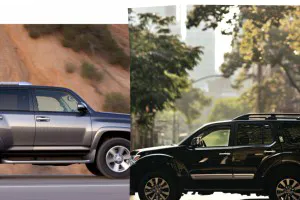The Average Cost for Rear Wheel Bearing Replacement is Between $100 and $347, Depending on if You Go to the Mechanic or DIY.
This price range is based on national averages for all vehicles and does not factor in taxes, fees, or your particular make and model. Related repairs or maintenance, such as front wheel bearings, brakes and rotors, and wheel hubs, might also need replacing and add to the cost and time. For a more accurate estimate based on your make, model, and location, check out the FIXD Sensor and free app!
Get a more accurate estimate
For a more accurate cost estimate based on your make, model, and location, use the FIXD Sensor and free app.
TRY FIXD FOR $19.99Cost at the Mechanic: $265 and $347
- Parts: $107 and $147
- Labor: $158 and $200
Most cars and trucks have sealed wheel bearings that will not need replacing or maintenance over the life of the vehicle. You’ll only need to replace sealed bearings if they go bad or get damaged. This can happen if you hit a large bump or pothole or if you have modified wheels, tires, or suspension kits.
Vehicles with tapered bearings are not as common today, but these will need to have service every 25,000 to 30,000 miles. As long as you regularly maintain this type of bearing, they should not have to be replaced.
Cost to DIY: $150 to $200
- Difficulty Level: Advanced
- Parts Needed: rear wheel bearings
The price of the rear wheel bearings varies greatly depending on the type of car and the type of wheel bearing you need. Since the task requires removing the wheel and the hub assembly, it is best performed by an experienced mechanic. The job also requires some specialized tools that most people don’t have. If you decide to tackle the job to save money, the make and model of your vehicle will significantly affect the cost.
Keep in mind: there are many different types of rear wheel bearings, and not all rear wheel bearings fit any vehicle. If you plan to replace the rear wheel bearings yourself, be sure to research and choose the right parts to fit your vehicle. High-end cars have more expensive components, including the wheel bearings, so it will cost more to do the job, even if you do it yourself. When in doubt, always refer to your owner’s manual.
If you get stuck, you can always reach out to our Mechanic Hotline for help. FIXD Mechanic Hotline is available at no cost with a FIXD Premium membership. Click here to get FIXD for only $19.99, including a free 14-day trial of FIXD Premium!
Try FIXD for $19.99
The FIXD Sensor and free app translates car problems into simple terms on your phone, tracks car maintenance, gives repair estimates, and more.
SAVE 67% NOWWhat Is a Rear Wheel Bearing?
A wheel bearing is a set of steel balls that sit inside a metal ring. The ring has a circular shape with a large hole in the middle to fit around the rear axle. The wheel hub assembly attaches to the wheel bearing, which allows the wheel and tire to to rotate while the axle stays fixed. The bearing minimizes friction while the wheel spins, helping to keep it and the brakes cool.
What Does a Rear Wheel Bearing Replacement Include?
Regardless of which type of rear wheel bearing you are replacing, the job starts by removing the wheel and brake caliper. If you have tapered bearings, you need to remove the outer wheel bearing and brake rotor. The inner rear wheel bearing sits on the inside of the rotor, which you can then remove. Once everything is off, you can replace the old rear wheel bearings with new ones. As you reassemble the bearings, you’ll need to pack them with grease to make sure they stay lubricated. Make sure you reassemble in the opposite order that you took components off.
For sealed bearings, the job is slightly easier (and less messy since it doesn’t involve packing bearings with grease), but getting to the point of removing the hub assembly bolts usually takes as much time. This job will take an experienced mechanic about two hours to complete, but again, it depends on the vehicle. High-end cars have more expensive parts and usually involve more labor.
What Happens If You Don’t Replace the Rear Wheel Bearings?
In most cases, you can drive a short distance with a bad rear wheel bearing. You’ll probably feel a vibration in the steering wheel, and if you start hearing a grinding sound, you should stop driving the vehicle. When it starts making this sound, it’s at a point where it could lock up, which could be extremely dangerous if you are on the road.
If you ignore a bad rear wheel bearing, it will continue to get worse. It will also produce excess heat, which will damage other parts of the wheel and brakes. If you don’t replace bad wheel bearings, your ABS light might come on.
How Often to Replace the Rear Wheel Bearing?
In most vehicles, the rear wheel bearings will last for up to and even over 100,000 miles. If you experience the signs of a bad wheel bearing, it is most likely because it suffered some form of damage, such as hitting a pothole. Wheel bearings do not need regular maintenance and will only need to be replaced if they fail. If you want more information about your vehicle’s wheel bearings, make sure to check your owner’s manual and maintenance schedule.
Never miss important maintenance with the FIXD Sensor and Free App. FIXD tracks routine maintenance and wear items for you – for free!
Common Symptoms You Need to Replace the Rear Wheel Bearing
- Steering wheel vibration
- Uneven tire wear
- The car pulls to one side
- Wobbling from side to side in wheels
- A loose steering feel
- A grinding noise
- ABS malfunction
If you notice any of these symptoms, your wheel bearings will not last much longer, so you should have them checked.
Related Maintenance Services
The following services are commonly performed with a rear wheel bearing replacement:
- Brakes and rotors
- Wheel hub
- Rotate tires while they are off the car
Never Miss Important Maintenance Again with FIXD
Get the FIXD Sensor and free app today for a custom maintenance schedule based on your make, model, and mileage. FIXD sends automated maintenance alerts right to your phone, so you never forget oil changes, tire rotations, brake pad replacements, and more. It even tracks tire, wiper, and battery life to keep your car running smoothly. Get FIXD today and take the stress out of car care. It’s that simple.

At FIXD, our mission is to make car ownership as simple, easy, and affordable as possible. Our research team utilizes the latest automotive data and insights to create tools and resources that help drivers get peace of mind and save money over the life of their car.












